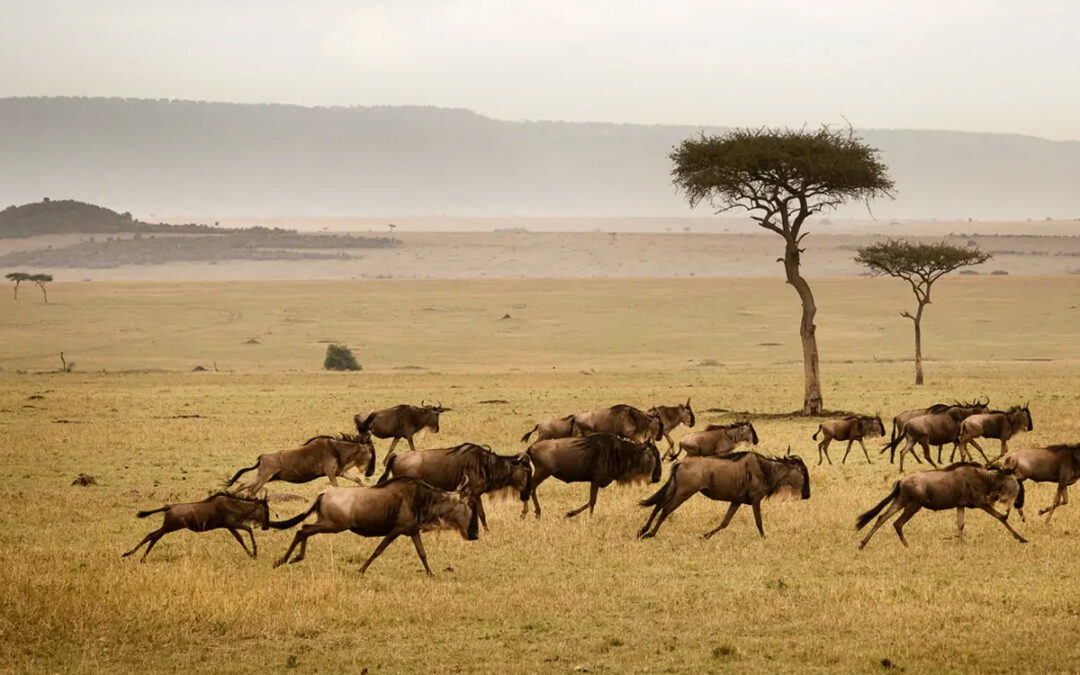Tanzania wildlife conservation and tourism 2025
Tanzania, a land of sprawling savannahs and extraordinary biodiversity, is a leading destination for wildlife tourism in Africa. In 2025, the country’s conservation efforts are not only preserving its iconic wildlife but also transforming how travelers engage with nature. From anti-poaching initiatives to community-led conservation programs, Tanzania is setting an example for sustainable tourism, ensuring that its natural treasures thrive for generations to come.
The Role of Conservation in Tanzania’s Tourism Industry
Tourism accounts for a significant portion of Tanzania’s economy, with wildlife tourism being the cornerstone. Serengeti’s Great Migration, the Ngorongoro Crater, and the rich ecosystems of Tarangire and Selous attract millions of visitors annually. However, this success comes with challenges, including habitat destruction, climate change, and poaching.
To address these issues, Tanzania has prioritized conservation, linking wildlife protection with the growth of tourism. By protecting its natural heritage, the country enhances its appeal as a top-tier destination for eco-conscious travelers.
Key Conservation Initiatives in 2025
1. Anti-Poaching Measures
The Tanzanian government has invested heavily in anti-poaching campaigns to protect its iconic species, such as elephants and rhinos. Key strategies include:
- Technology Integration: Drones, GPS tracking, and advanced surveillance systems are being used to monitor wildlife movements and deter poaching activities.
- Specialized Task Forces: The establishment of the National Anti-Poaching Unit has led to significant reductions in illegal wildlife trade.
- Community Partnerships: Local communities are incentivized to report poaching activities through reward programs.
2. Expanding Protected Areas
Tanzania is home to 22 national parks, including the newly established Nyerere National Park (formerly part of Selous Game Reserve). In 2025, the government will continue to expand protected areas, safeguarding critical habitats and ensuring a buffer zone for wildlife.
3. Community-Led Conservation
Engaging local communities is a cornerstone of Tanzania’s conservation success. Through initiatives like Wildlife Management Areas (WMAs), communities are empowered to manage their natural resources while benefiting from tourism revenues. These programs provide alternative livelihoods, reducing the pressure on wildlife and their habitats.
4. Sustainable Tourism Practices
Tour operators and lodges are increasingly adopting eco-friendly practices. This includes:
- Low-Impact Lodges: Accommodations that use solar energy, recycled water, and biodegradable materials.
- Strict Visitor Limits: Parks like Ngorongoro have implemented restrictions on vehicle numbers to minimize environmental impact.
- Educational Safaris: Tourists are encouraged to participate in conservation-focused activities, such as tree planting and wildlife monitoring.
Wildlife Success Stories in 2025
Elephant Population Recovery
Once decimated by poaching, elephant populations in Tanzania are rebounding due to enhanced protection measures. Parks like Tarangire and Ruaha have reported an increase in elephant herds, delighting visitors and conservationists alike.
Rhino Conservation
The critically endangered black rhino is making a comeback in the Ngorongoro Crater, thanks to relocation and breeding programs. Travelers can now witness these majestic creatures in their natural habitat, a testament to Tanzania’s conservation success.
The Serengeti Ecosystem
The Serengeti remains one of the world’s most intact ecosystems, largely due to strict conservation policies. The Great Migration, involving over 1.5 million wildebeest and zebras, continues to awe visitors while showcasing the importance of habitat preservation.
The Impact of Conservation on Tourism
1. Increased Eco-Tourism Demand
Travelers in 2025 are increasingly eco-conscious, seeking destinations that prioritize sustainability. Tanzania’s conservation efforts align perfectly with this trend, making it a preferred choice for wildlife enthusiasts and nature lovers.
2. Enhanced Visitor Experiences
Protected habitats and thriving wildlife populations ensure that visitors enjoy unforgettable safaris. From lion sightings in Serengeti to birdwatching in Lake Manyara, the diversity of experiences is unmatched.
3. Strengthened Local Economies
By involving local communities in conservation, Tanzania creates a sustainable tourism model where locals benefit directly. This not only improves livelihoods but also fosters a shared commitment to protecting wildlife.
Challenges and Future Goals
Despite significant progress, challenges remain. Human-wildlife conflict, illegal logging, and the effects of climate change continue to threaten Tanzania’s ecosystems. To address these issues, the country aims to:
- Promote Climate-Resilient Practices: Incorporate climate adaptation strategies into conservation plans.
- Strengthen International Partnerships: Collaborate with global organizations to fund and support conservation projects.
- Educate Tourists: Increase awareness about responsible tourism and its role in conservation.
How Tourists Can Support Conservation in 2025
Visitors to Tanzania can contribute to conservation efforts in several ways:
- Choose Eco-Friendly Operators: Support tour companies committed to sustainable practices.
- Respect Wildlife: Follow park guidelines, such as maintaining a safe distance from animals.
- Donate to Conservation Programs: Contribute to organizations working to protect Tanzania’s wildlife.
- Engage in Responsible Travel: Avoid single-use plastics, minimize waste, and respect local cultures.
Tanzania’s conservation efforts are shaping a brighter future for wildlife tourism in 2025. By protecting its natural heritage, the country not only preserves its biodiversity but also enhances its appeal as a premier travel destination. For tourists, visiting Tanzania is more than just a vacation—it’s an opportunity to witness the power of conservation in action and contribute to the preservation of Africa’s wild beauty.
FAQs
1. What are Wildlife Management Areas (WMAs)?
WMAs are community-managed conservation zones that allow local populations to benefit from wildlife tourism while protecting habitats.
2. Can I participate in conservation activities during my safari?
Yes, many tour operators offer conservation-focused experiences, such as wildlife monitoring and tree planting.
3. Are Tanzania’s national parks open year-round?
Most parks are open year-round, but the dry season (June to October) is ideal for wildlife viewing.
4. How does tourism revenue support conservation?
Tourism revenue funds anti-poaching units, community projects, and park maintenance, ensuring long-term sustainability.
5. What is the cost of visiting Tanzania’s national parks?
Park fees vary, with most parks charging around $82.6 per person per day, inclusive of VAT.
Uncover Tanzania’s Wonders!
Discover:
- Tanzania Culture – Immerse yourself in vibrant traditions, Maasai heritage, and local lifestyles.
- Tanzania Migration Safari – Witness the world-renowned Great Wildebeest Migration in the Serengeti.
- Tanzania Safari Destinations – Explore top wildlife havens like the Serengeti, Ngorongoro Crater, and Tarangire.
- Arusha National Park – Perfect for walking safaris, canoeing, and spotting Mount Meru.
- Kilimanjaro National Park – Conquer Africa’s tallest mountain or enjoy scenic treks.
Start your Tanzanian adventure today!


